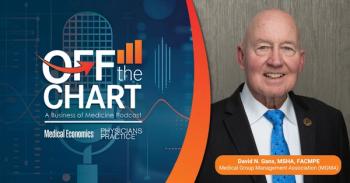
Minimizing the risk of gun violence in physician offices
We all want to think “it will never happen here,” but the recent shootings reinforce that you need to prepare for the worst instead of hoping for the best.
In recent years, we have seen a number of cases where physicians were shot by patients and family members. The causes have been all over the board. Missed diagnosis. Grief. Blame. Anger. Jealousy. Relationships. Malpractice. The list goes on and on.
Regardless of the reason or motivation, the end result has been the same: Physicians and office staff are injured or killed at the hands of someone with a vengeance.
As a consultant who develops programs to protect healthcare providers, I stay away from the ongoing debate about gun ownership and accessibility. I’m not here to argue the Second Amendment, and smarter men than me have engaged in that discussion without conclusion or remedy.
The fact remains that firearms are very present in our society; they are easily accessible and will remain so. The risk will remain present, so we must therefore work together to mitigate it.
How do we reduce the risk of gun violence at physician offices? It starts with preparedness. One of the most difficult truths to accept is that it may happen in your office. Just like any other vulnerability, it is necessary to prepare for an armed intruder even if it seems unlikely.
We all want to think “it will never happen here,” but that mindset usually leads to a catastrophic outcome. Survival is the result of preparedness and training. If survivability is left to happenstance, your chances of remaining safe and surviving the event are minimized. The possibility of violence must be taken seriously, and everyone in the office must be trained.
That training starts with you and staff being conscientious of communications with patients and their family members. Excessive wait times can cause equally excessive stress on patients and their family, which may result in them turning to violence to resolve their frustration. Training your staff to be open, honest, and polite when communicating with your patients is one of the simplest things you can do to start reducing the risk of violence. Don’t tell patients what you think they want to hear. Tell them the truth, and be sensitive to the way you present it.
Smartphones and cell phones can also be problematic. Regardless of the criticality of a call, when you’re with patients, make them feel they are the most important part of your day. Looking at emails, texting, or answering phone calls while you are with patients may seem like necessary multitasking, but they may interpret your actions to mean their visit or their condition is of minimal concern to you.
Similarly, when you are leaving the office, keep your phone in your pocket. Don’t allow your phone to become a distraction. Be aware of your surroundings and any potential risks that may be lurking. Look ahead, be aware of the cars parked around you, note whether they are occupied, and see if you recognize the occupants. None of this is possible with your head down and eyes on your phone.
Look at your office environment as well. Is the waiting room secured from the exam and treatment areas? Are the doors locked, or can the patient or family member just walk in from the waiting room? Doors between waiting rooms and treatment or exam areas should remain secured at all times. Do not allow anyone an opportunity to get into the exam or treatment areas unless staff grant them access.
The same thing applies to the reception window-if your practice has one. Is the office laid out in such a way that an adversary could easily crawl through the window? Is the reception window always open? Can it be closed and locked in a hurry? If you don’t have an office window, do you have a way to protect all of your employees?
Another area where I often see physicians’ practices are lacking is the absence of training. What type of training do physicians and staff receive with regard to recognizing and defusing aggressive behavior? Some practices may have an active shooter and/or armed intruder plan. However, few of my past clients have ever drilled or exercised the plan. Having a plan is great, but if you and your staff don’t practice, that plan won’t do you much good.
We will be talking more about a variety of topics related to office and practice safety and security in the future. If there are topics you’d like to see discussed, feel free to drop me an email. I can’t promise to address everything, but my goal is to keep this column fresh, timely, and topical.
In the meantime, stay safe and stay in touch.
Steve Wilder is president and COO of Sorensen, Wilder & Associates, a healthcare safety and security consulting group based in Bradley, Ill. Steve has 35 years of healthcare risk management experience and works with hospitals, senior living communities, physician practices, medical spas and clinics across the nation. He can be reached at 815-933-5977 or by email at swilder@swa4safety.com.
Newsletter
Optimize your practice with the Physicians Practice newsletter, offering management pearls, leadership tips, and business strategies tailored for practice administrators and physicians of any specialty.









